The Airbus Helicopters Kiwi Rendezvous was staged in early 2024 at Glendhu Bay near Wanaka in New Zealand’s South Island; a fly-in that celebrated Airbus Helicopters’ history in New Zealand and the remarkable milestone of forty million worldwide flight hours of the AS350 Squirrel (Ecureuil) series.
New Zealand has approx. 900 helicopters and around 320 of those are Airbus products, almost a third of the entire national rotary-wing fleet. Murray Benns has been with Airbus in New Zealand for around 25 years. He set up the engineering department in 1999, worked as a tech’ rep’ for about 14 years with ten years in sales as well,and is currently the New Zealand Sales Manager. He explained that the Kiwi Rendezvous in May 2024 came about as the result of a desire to acknowledge the company’s history in New Zealand and to celebrate the significance of accumulating forty million hours on a single type series. “It’s a big family with Airbus here in New Zealand and it’s only been so successful because we’re a really close team,” he stressed.
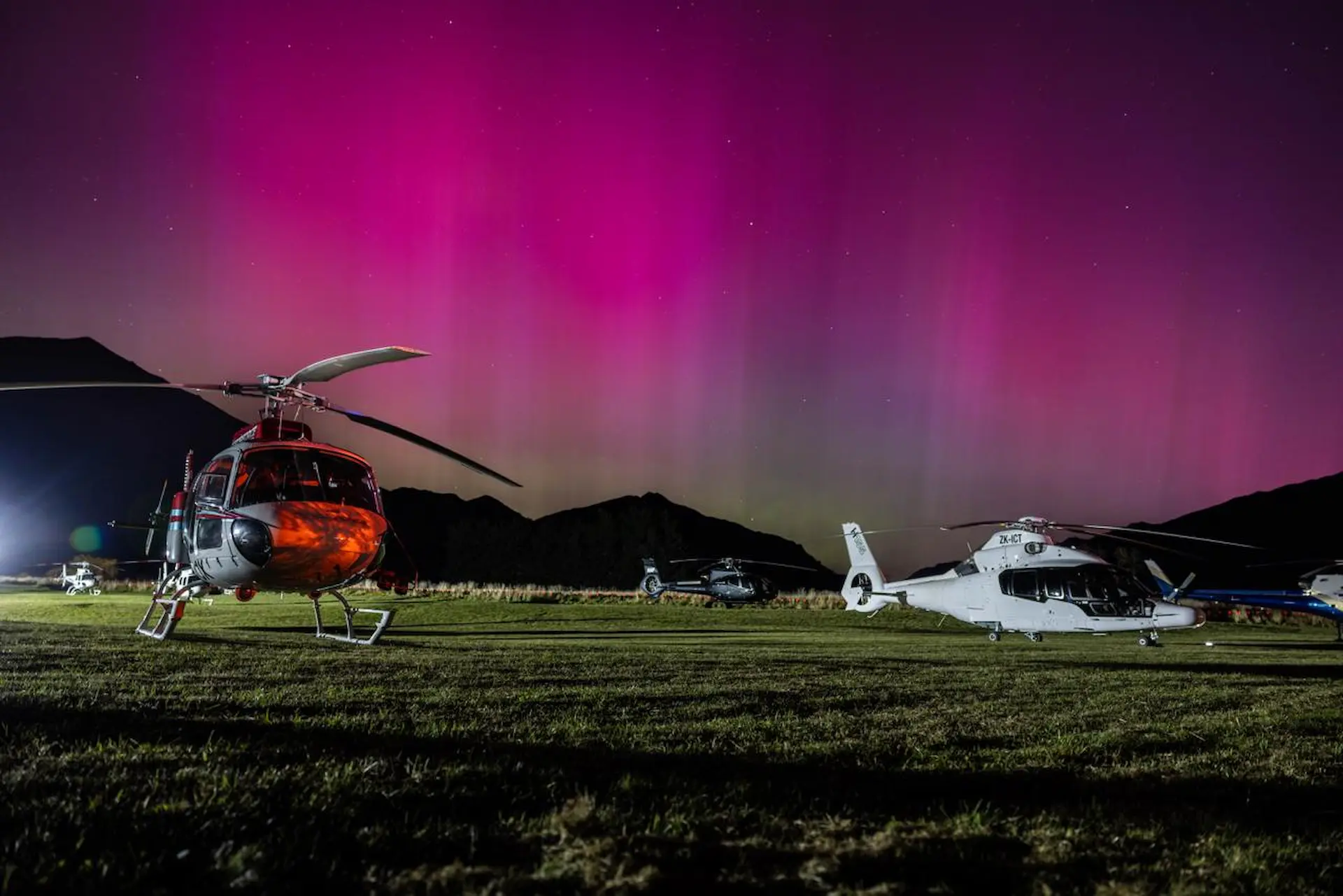
Around two million of the Squirrel’s forty million flight hours have been accumulated in New Zealand, an impressively high number considering the small size of the country and its population. Airbus has sold more than 180 helicopters into New Zealand since 1998 and 2023 was the New Zealand team’s best year in sales to date, with fourteen contracts signed that included five H145-D3s, seven H125s and the two H130s. For the last 20 years approximately ninety percent of all new helicopters sold in New Zealand have been Airbus product.
Clinton (Clint) Watt, Airbus’ Vice President Sales and Marketing for Australia Pacific explained that one of his first observations when he came to the region over seven years ago was that New Zealand is an island community with a small landscape but large concentrations of helicopters in localized areas. “That creates a perfect setting for a get-together and that’s a perfect start there,” he remarked. “It creates an opportunity to draw like-minded people together and show our appreciation, giving something back to our customers.” Watt explained that a key goal behind the original concept was to get private and business helicopter operators into an experiential environment that enabled them to get the most benefit out of operating in environments for which the helicopter is ideally suited, but doing so in a way that ensures high standards of safety are maintained.
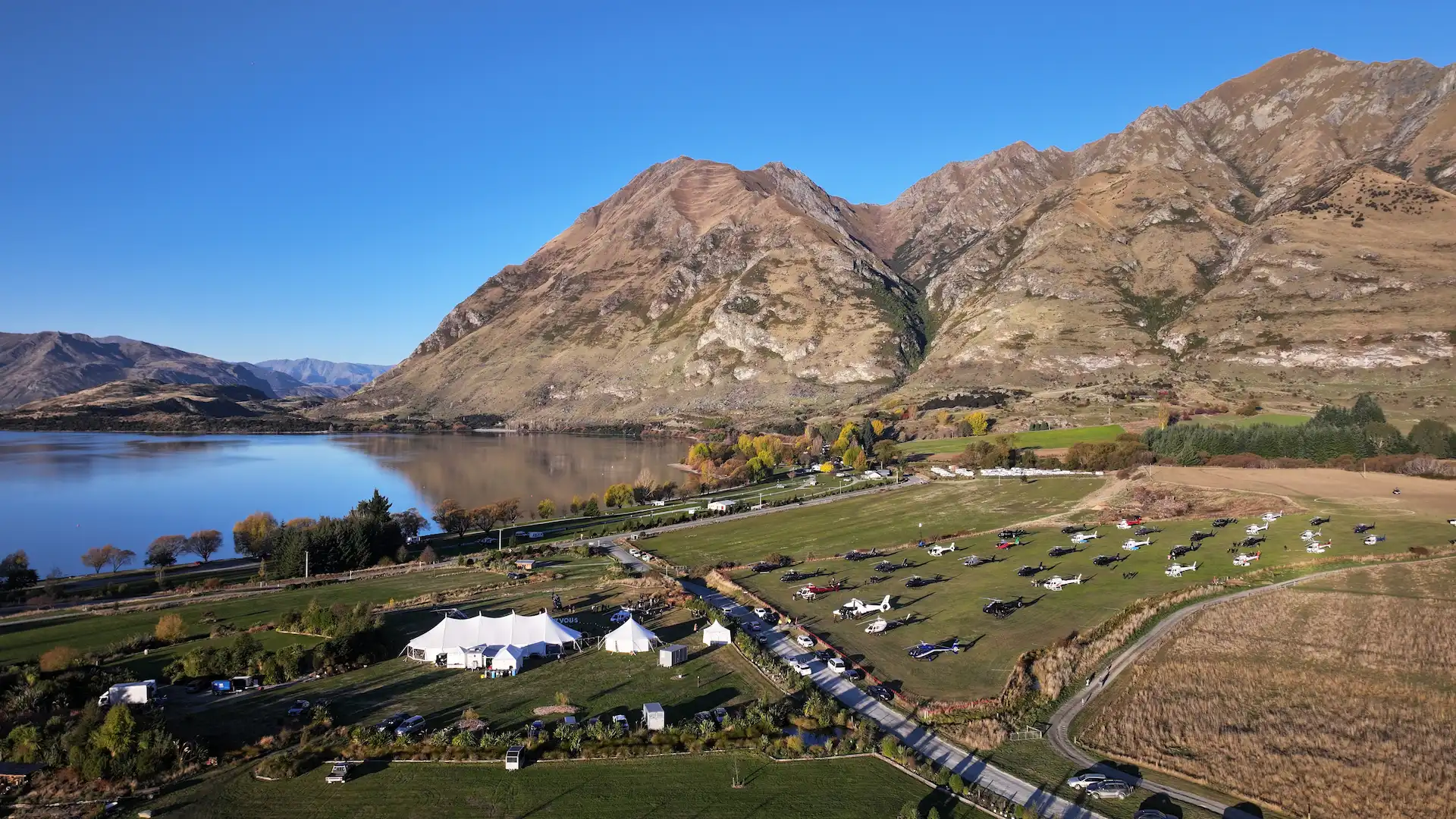
Watt organized and ran a similar event in South Africa several years ago and he credits that as the genesis of the Kiwi Rendezvous concept. “Although we first started thinking about this seven or eight years ago, covid interrupted everything and the ensuing economic uncertainty made planning something impractical. Fortunately, the New Zealand economy started to pick up quite fast and that coincided with the forty million flight hours and fifty-year longevity of the Ecureuil family,” he explained, adding that the small size of the country made it feasible for many operators to travel to such an event. “Another thing that made it easier was ease of operation around New Zealand. You don’t have the restrictive operational environment with regard to flight routes and restricted areas that many other countries have to contend with.”
The 2023 Great Kiwi 500 fly-in at Hanmer Springs had demonstrated how successful such an event could be and senior personnel at Airbus Helicopters began to search for a suitable location to stage a major fly-in and showcase event for Airbus product and its Kiwi (New Zealand) operators, although attendees came from as far afield as Australia, Asia and France….and Germany. “We considered whether we should look at a location in the North or South Island, or maybe in the middle of the country but then assessed where the greatest concentration of our customers operates and that is in the lower South Island,” Benns related.
A hilltop site above Arrowtown was considered but logistical issues and the lack of council sign-off for helicopter landings made Glendhu Bay near the town of Wanaka the best option. “Glendhu Bay had everything we needed and wanted, including a relatively remote location because we wanted to make it an event specifically for our customers away from the general public, and the camping ground nearby was relatively quiet during the shoulder season. It’s fairly remote in the mountains beside the lake, but only a fifteen-minute drive from Wanaka with good access to hotels there and in Queenstown for our team and those that couldn’t fly their helicopters down,” he added. One of the first Squirrels in the world (ZK-HMY) came into New Zealand in May 1979 through Airwork. It was sold to the Wallis family’s company Alpine Helicopters and flown extensively by industry icon Bill Black. That airframe is still actively flying for Island Hoppers in Fiji and is a testament to the durability of the design, with around 19,000hrs clocked up so far. “That’s another reason the location for the event was so ideal, as it’s the home area of the Wallis family and a tribute to their contribution to the helicopter industry,” Benns opined.
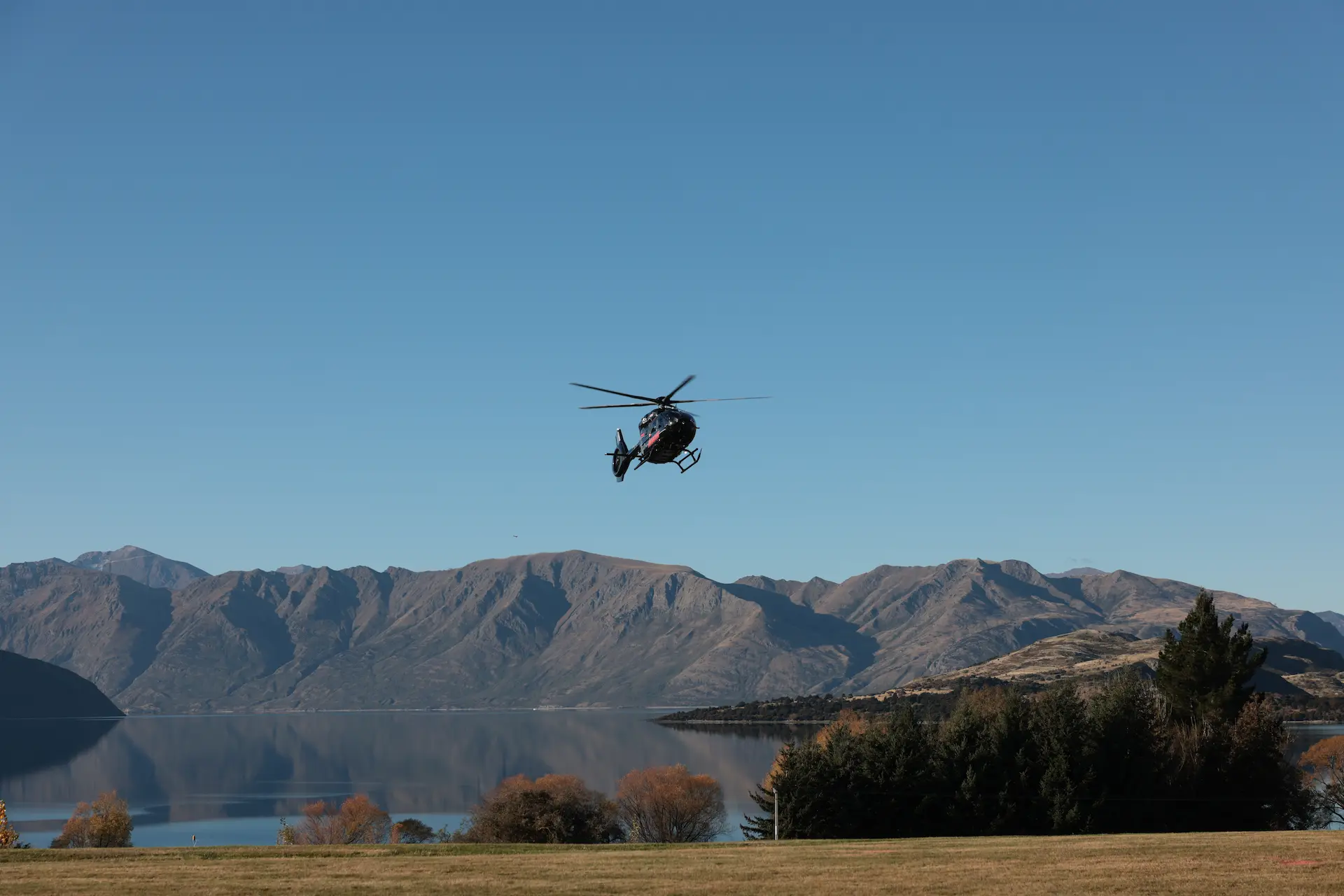
The timing of the event was an important consideration and while summer was an obvious first choice, it was realized that most operators are at their busiest during that time. “We originally locked it in for June but eventually brought it forward to 11 May on the recommendation of a local operator who raised concerns about the fog that can be prevalent at that time of year,” Benns noted. “Thankfully we did, because the weather was ideal and everything went perfectly.” The good weather was a great relief as poor weather is the gravest threat to such an event and had been the greatest concern to organizers in the days leading up to the rendezvous. “We watched the forecasts closely in the lead-up to the event and about ten days out we felt pretty confident that we were at least going to have fine weather. We didn’t think we would have any rain or wind but we knew it was going to be pretty cold as well.”
Initial momentum for the event came via a Facebook page that allowed organizers to gauge reaction across the breadth of the customer base, with an overwhelmingly positive response. Benns elaborated, “Then we went deeper with our staff, particularly our tech’ rep’s who are out in the field weekly to see if we could get more involvement from those who hadn’t responded, were not on social media or had not seen the Facebook posts. At that point we had to start looking at the logistics of running the event and who we should be bringing from our teams in Australasia, Asia and Europe. Establishing how we would fund it was important because running an event like this isn’t cheap. However, we really wanted this to be the best event of its type in the world and I don’t think that Airbus has ever done anything of this magnitude before, certainly not in this part of the world. We didn’t want to scrimp or penny-pinch so we chose a top event organizer ‘Truly Yours’ and that was such a good decision because everything was impeccably organized and well catered, with around 200 attendees fed excellent restaurant quality food. I can’t speak more highly of the Truly Yours team who did an outstanding job right the way through from start to finish.”
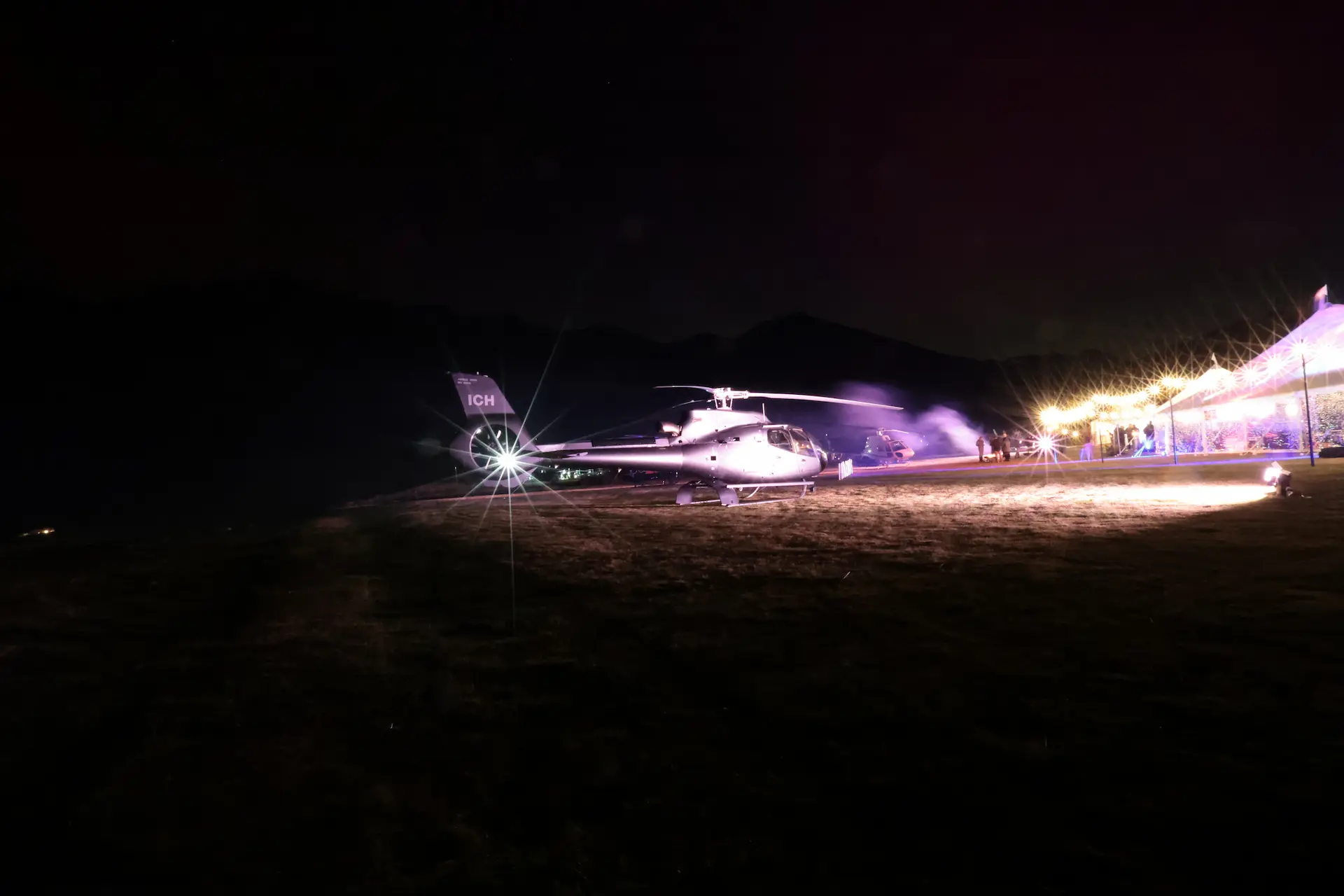
With the basics in place and a good response from industry, a final decision was made about four months out to definitely go ahead and once the location was finalized, the primary focus of organizers became the safety of the event. A safety team including chief pilot Frank Novak and Adam Bernhardt, experienced pilot and the Australia Pacific regional safety manager for Airbus worked extensively to ensure appropriate procedures and protocols were established to ensure satisfactory safety levels. Watt commented that the decision to hire an event management company turned out to be highly advantageous, as it was not initially recognized how immense the planning and organizational effort would be. Relegating the event’s catering and event management to Truly Yours enabled Airbus’ efforts to be focused on safety planning and management, a process that also utilized kiwi operators’ local knowledge and experience.
The chosen site was visited on several occasions and flight arrival, departure and parking procedures were laid down, hazard notification protocols were established and weather factors were considered and allowed for. The final safety plan was then forwarded to Airbus’ chief pilot and the company’s managing director for approval and sign-off. “It needed to be a very, very safe event because we didn’t want to be in the news for any reason other than for conducting a successful, safe event. We did a site recce’ in the two days leading up to the event with Aspiring Helicopters, who flew in and went through all our procedures and all the work really paid off on the day,” said Benns. “Once we had the safety plan completed it was a substantial document and our only concern then was whether the local operators would adhere to it,” Watt recounted. “The cherry on top for us was that everybody actually logged in to the safety briefings and complied with everything we asked; routes in and out, landing zones, maneuvering and parking areas, respecting all the rules we had in the safety plan. That took such a weight off everybody’s shoulders.”
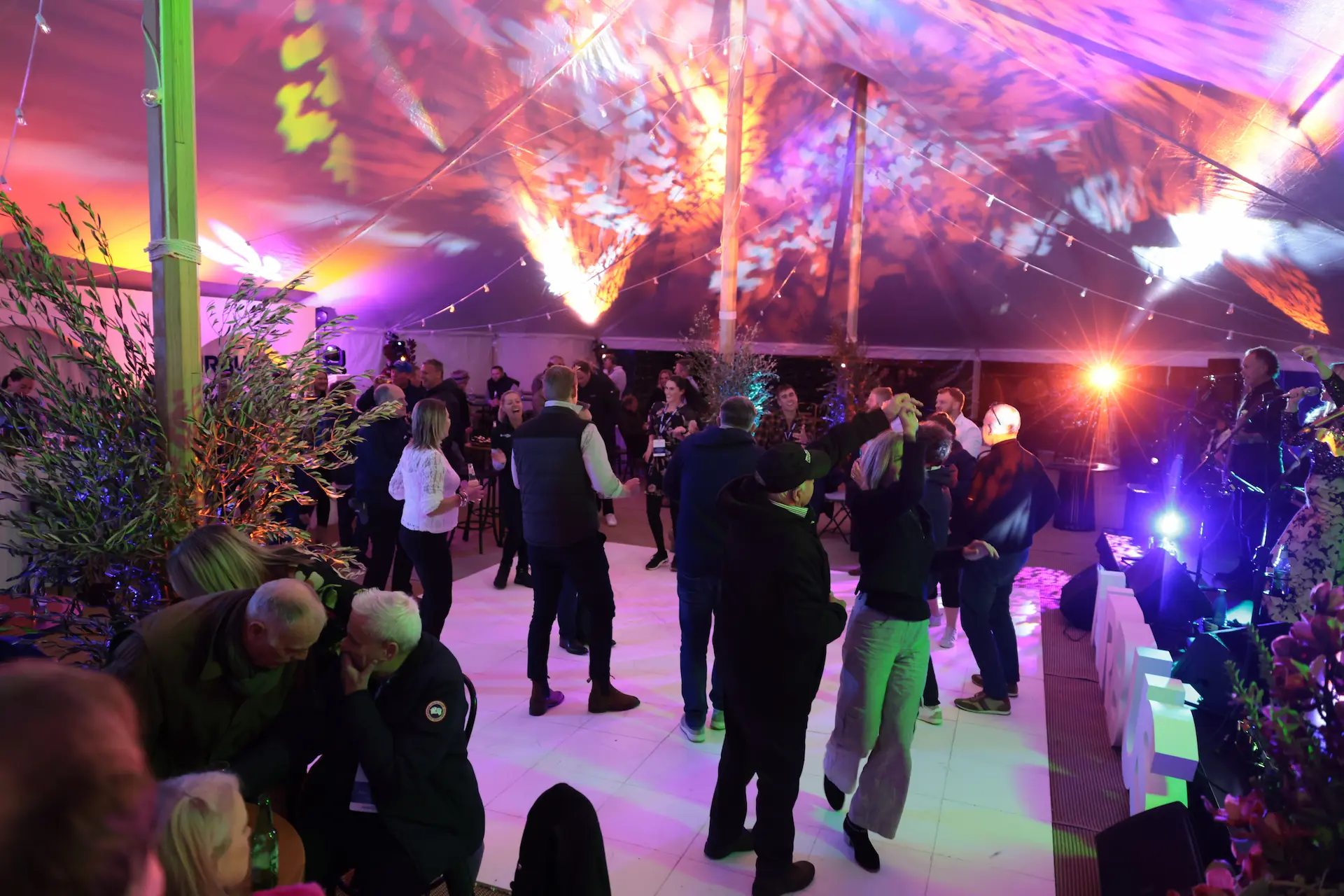
The flight ops team not only sent out email briefing packs in the week or two prior to the Rendezvous, they also held several online live briefing sessions with the safety team and helicopter landing officer Bernhardt for operators and pilots who would be attending. The online briefings included Q&A sessions to ensure that everyone was happy and confident with all aspects of the event. Arriving aircraft called up on a dedicated frequency and the first aircraft arrived around 9:00am; an EC120 from Fox Heli Services. Incoming machines were guided by ground personnel to one of two landing zones, then to the parking area where other radio-equipped ground staff directed them and aligned them neatly with the other aircraft. The total complement of around thirty Airbus staff included six or seven flight op’s personnel who not only guided the aircraft in but also assisted with the meet-and-greet and chaperoned the arriving attendees safely away from the parking areas and on to the registration and sign-in areas. Early arrivals were shuttled to their accommodation in Wanaka but Benns made a point of being on hand to greet every single arriving attendee, commenting, “I thought that I should be there because I’d spoken to most of them in the lead-up and wanted to make sure that there was a personal connection right from the beginning.” He observed that most aircraft arrived half full or more, with attendees including not just operators and private owners but often their families as well.
A wide range of Airbus Helicopter types turned out for the event, a total of 41 machines that ranged from the EC120 to the ubiquitous AS350 and H125 Squirrel variants, three of the ACH130 Aston Martin editions (in fact the highest concentration of ACH130 Aston Martin editions in one place at one time was at the Wanaka event – noting also that 5 x ACH130 Aston Martin editions have been sold into New Zealand), H130, AS355NP, EC145, H145D3, EC155 and an NH90 from the RNZAF’s 3-Squadron. The Air Force attendance was much appreciated as its machines support the civil community extensively in the SAR role and civil operators get few opportunities to observe the large NH90 up close. It also helped illustrate the diversity of the Airbus Helicopters market involvement in New Zealand, with the company not only selling the wide range of aircraft but also providing maintenance services for the Air Force’s NH90s. While maintenance issues or work demands meant some intending attendees were unable to make it to the event, several operators brought two, three or even four machines to the Rendezvous; a clear indication of the goodwill existing between Airbus and its core clientele.
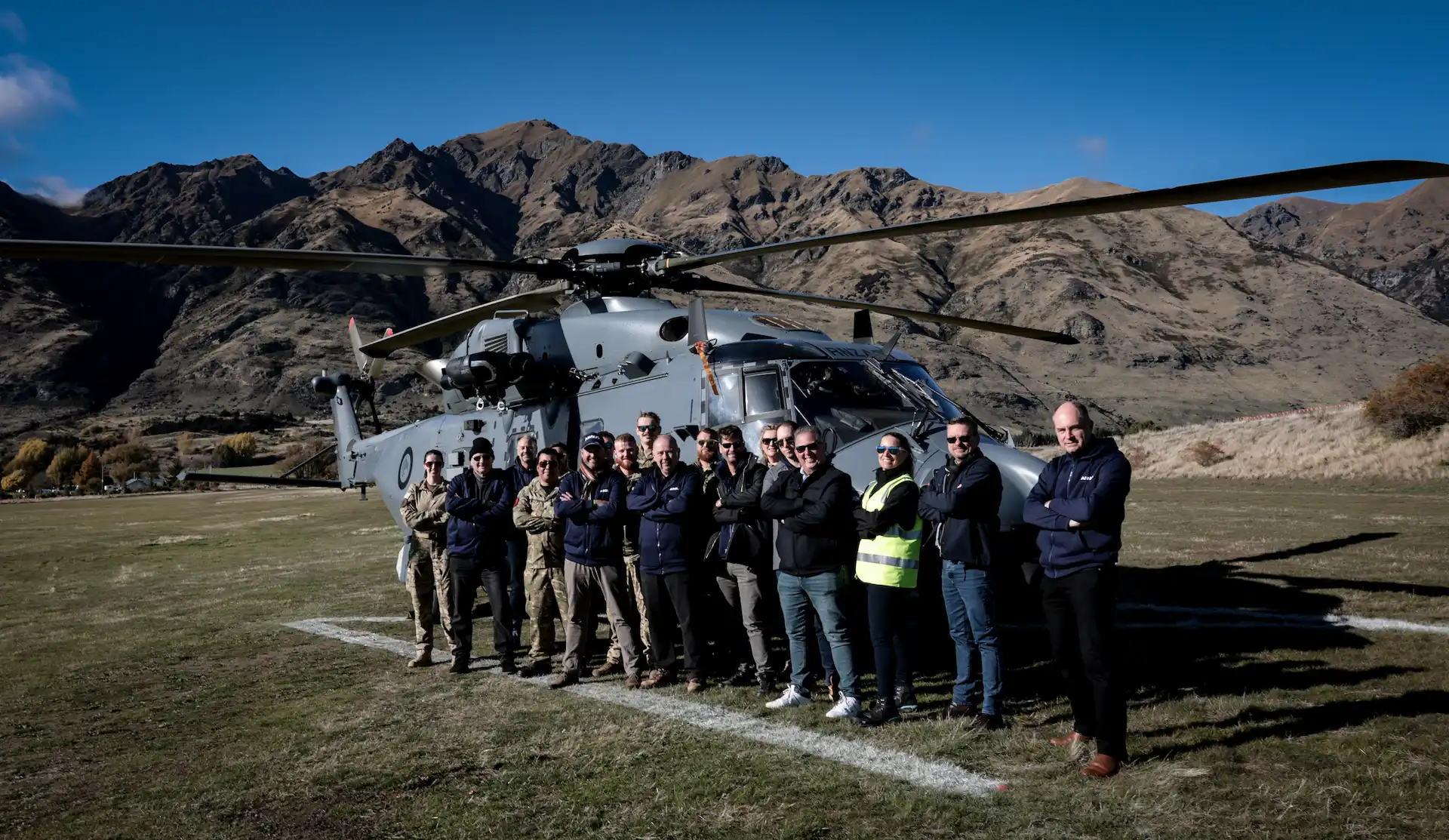
Eight or nine of the aircraft that attended were also engaged in the Heli-Safari organized by Jonny Chambers that commenced in Auckland on the Wednesday prior to the Rendezvous, while adventurous Australian pilot John-Paul (JP) Thorbjornsen even flew his ACH130 3,000kms from the Northern Territory for the event, via Lord Howe and Norfolk Islands. Three machines were parked right in front of the main marquee, including an H125 of Alpine Helicopters in recognition of the company’s significance in the industry, the event and its long relationship with Airbus Helicopters, Heli Otago’s H145-D3 and an H130 from Heliworks Queenstown. “We really wanted to highlight the H125 and the H145-D3,” remarked Benns. “The 145 is a very important product for us at the moment in the EMS market.”
Emcee for the evening program was Mike Allsop, an Air New Zealand pilot and adventurer/mountaineer who has summited Mount Everest on an unguided expedition. He not only emceed proceedings but he also related a gripping account of his accident in a DHC Twin-Otter while in his twenties. Allsop then spoke of his mountaineering experiences and this led nicely into the guest speaker’s presentation, in which just-retired legendary helicopter pilot Didier Delsalle shared his experience of landing an H125 on the summit of Mount Everest on 15 May 2005. According to Benns, such was the interest in Delsalle’s presence that some operators who may not have otherwise attended chose to drive to the event just for the chance to meet and talk with Delsalle. Among those attending the event to represent Airbus senior management and programs were head of the H145 program Axel Humpert with three of his colleagues, Marie-France Thomas Thomas from the light helicopter program, Head of Region Vincent Dubrule from Singapore with his Executive Assistant Shirley Chia, VP Head of Sales & Marketing Asia Pacific – Fabrice Rochereau, Clinton Watt and Romain Trapp, Executive Vice-President Customer Support & Services.
Discussions during the event and post-event feedback from attending operators highlighted the fact that many chose to be very long-term Airbus clients because of the exceptional service they get from the entire New Zealand Airbus Helicopters team; from the warehousing and parts staff, the engineering department and technical rep’s and all the behind-doors administration and support staff that hold the whole system together. Texts, emails and messages from attendees after the event were numerous and unanimously positive, all expressing gratitude for the event and praise for its organization.
“With respect to our customers, we wanted to make sure we had the right people there for them to meet and interact with and having that level of key people attending also helped with customer engagement,” advised Benns, who commented that the night was topped off by having great food and a live band that played during the evening. “The Marquee was set up beautifully – very New Zealand inspired – and there was great food, great wine, great music and great company. The icing on the cake was having Didier Delsalle there and the appearance of the Aurora Australis in the night sky.” Watt remarked that alongside the satisfaction of delivering a safe event, the greatest take-away in his view was how thoroughly a comprehensively broad cross-section of kiwi operators bought into the event as a genuine celebration and opportunity for meaningful engagement with Airbus Helicopters personnel at all levels. “It certainly goes down as the best event I’ve been involved with in my 25 years in Airbus,” he concluded.
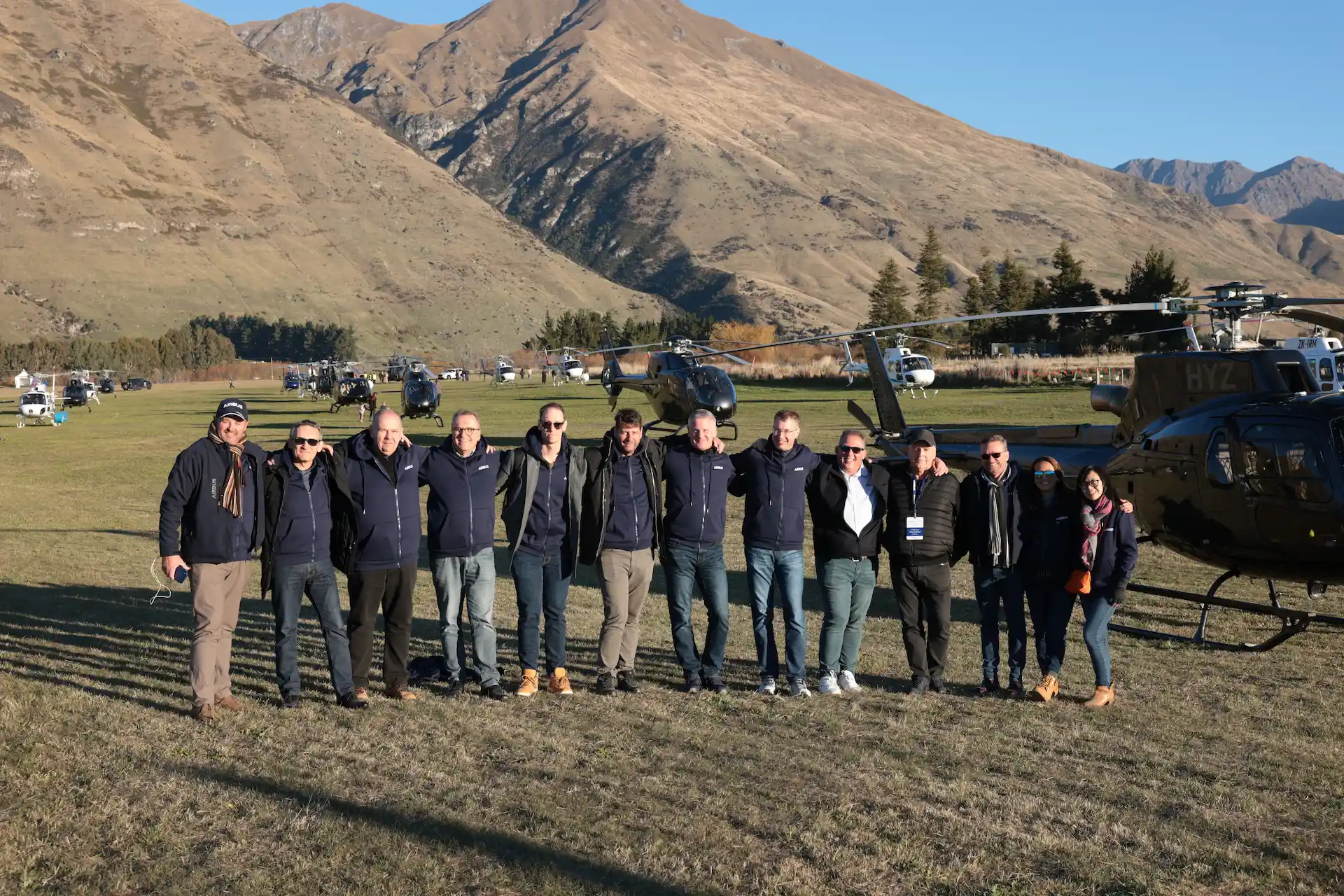
The Kiwi Rendezvous turned out to be an undeniably successful event and will possibly remain as a one-off occasion. Whether Airbus will decide to conduct similar events elsewhere around the world is unknown but as Benns observed, “This was the first Airbus event of this type and hugely successful, and maybe the only one we ever do in New Zealand, because who wants to be second?” In closing, Benns expressed his immense gratitude to the entire team from Airbus that organized and ran the event, pointing out that such occasions inevitably rely on the efforts of many people, never just one or two. “If we do hold another Kiwi Rendezvous, I’d want it to be in maybe five years or so because this one went so well that I genuinely don’t know what we could have done better and it will be very hard to surpass that.”
 HOME
HOME


